Introduction
You've sent out a marketing campaign hoping to generate many leads, and you do.
But those leads don't convert.
The problem could be that you haven't probably targeted and segmented leads appropriately.
Efficient lead targeting and segmentation are required at the core of every marketing strategy to convert leads into customers. Organizations need to move away from a one-size-fits-all approach. And instead, deliver personalized content that suits the needs, interests, and background of the target audience.
What Is Lead Targeting?
According to a study carried out by McKinsey & Company, organizations that excel at personalization generate 40% more revenue than average players. Non-personalized marketing activities even pose a risk of frustrating customers.
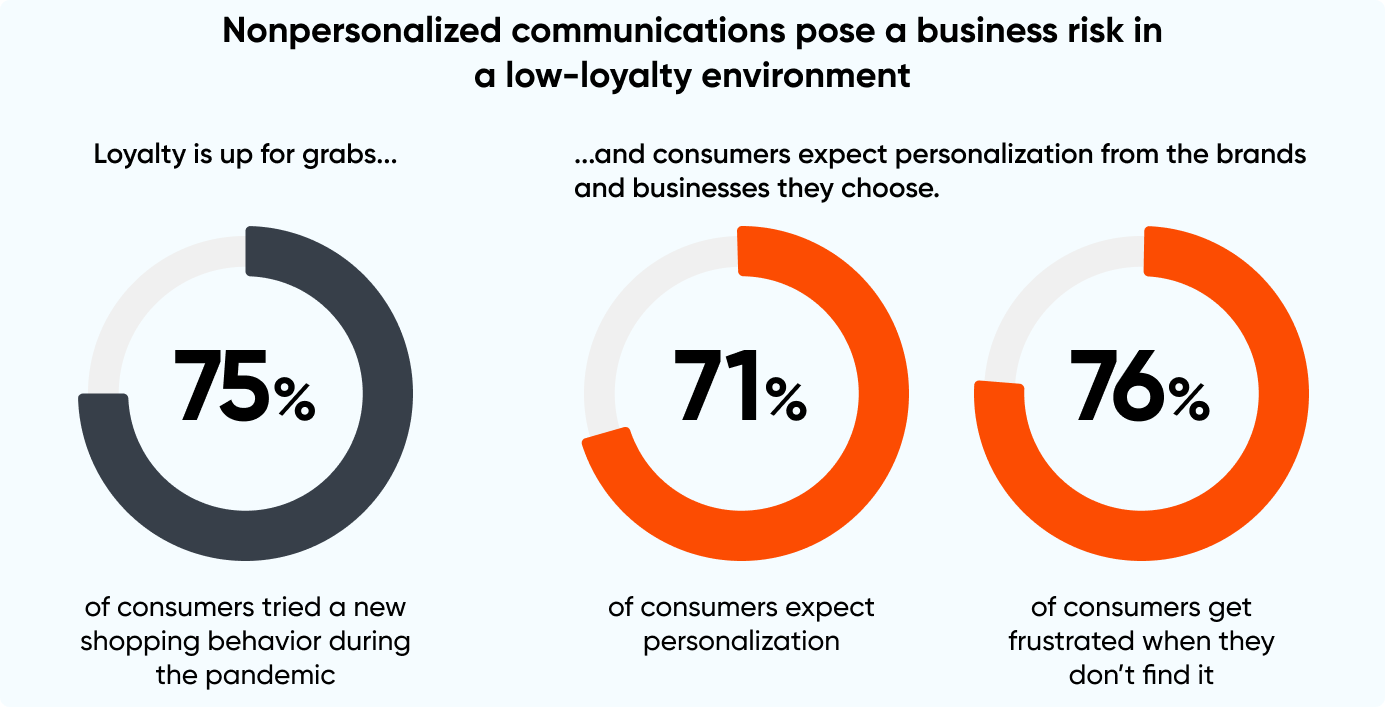
Lead targeting is crucial in personalization as it helps break down a larger target market into smaller segments and focuses more on customers who fit the Ideal Customer Profile (ICP). Lead targeting also helps:
- Build better customer relationships
- Reduce churn
- Increase customer retention
- Ensure a healthier sales-qualified revenue pipeline
- Address specific needs of customers
How To Effectively Target Leads With Your Marketing Automation Platform
Targeting leads manually can be time-consuming and disorganized. Modern marketing automation platforms like HubSpot, Salesforce Marketing Cloud Engagement, Acquia Marketing Cloud, and Mautic help solve these problems by automating lead targeting. This allows organizations to focus on creating a successful marketing strategy.
Most MarTech solutions provide detailed contact tracking. They also automate finding and nurturing contacts through landing pages, forms, email campaigns, text messages, and web notifications. All of this can be done by following the steps given below.
Prerequisite: Identify the Right Marketing Automation Platform
Before targeting leads with a marketing automation platform, organizations need to find a platform that fits all their needs. This can be done by comparing the features of different MarTech platforms like HubSpot, Mautic, Marketo, Salesforce Marketing Cloud Engagement, and Acquia Campaign Studio.
Step 1: Be At The Right Place
Find out the locations where your potential customers are present, whether online or offline. Learn what interests them and try to live in their shoes so your marketing campaigns become empathetic.
Step 2: Think Like Your Audience
To target the right leads, marketers must avoid wanting to capture every possible lead. Instead, the focus should be on highly targeted, relevant leads likely to convert into customers.
Before targeting the right leads, marketers need to know what makes their target audience tick, what they are looking for from an organization, and what problems they are facing that your product or service helps solve. Ensure that while thinking like your audience, you are using the right keywords and industry-relevant content.
Step 3: Analyze What Tomorrow Holds
Address the question of what future value your product or service holds. Try to identify how the market will evolve and do more than provide a service or product that meets customer requirements today. Constantly innovate and push boundaries in anticipation of what will be required.
Ruth Cheesley, the Mautic Open Source Project Lead, also discussed the new features coming to Mautic soon.
Step 4: Estimate The Size Of The Potential Market
Next, evaluate the potential size of your target market. This will help you understand the possible demand for the product or service. You should also look beyond the existing audience and into where your audience might expand. Identify the limitations and boundaries of your product or service as well.
Step 5: Evaluate Competitors
Dig into the marketing strategy of your competitors. Find the keywords they are targeting, their landing page best practices, and the type of email marketing campaigns they are running. Look around and see what’s being done.
Step 6: Plan Strategy
Collate all the information collected above and build a marketing campaign. Focus on creating conversion-driven landing pages, skimmable emails, and powerful marketing collateral to craft your content marketing strategy.
Mautic has robust marketing automation capabilities to help organize multiple campaigns based on the target audience. With Mautic, which can form an integral part of a DXP, marketers can test landing pages, keyword strategies, form conversions, and register better leads.
These capabilities are also available with other marketing automation platforms like Salesforce Marketing Cloud Engagement, Marketo, and Acquia Marketing Cloud.
What Is Lead Segmentation?
Lead segmentation is dividing leads into smaller groups depending on various categorizations. Marketers use lead segmentation to organize leads based on their demographic, behavior, transactional history, and firmographic to enable meaningful interactions.
A few benefits of lead segmentation are:
- Organizing leads helps create tailored, relevant messaging. It makes it easier to determine the type, intent, and channel through which content should be delivered.
- Lead segmentation improves engagement and reduces unsubscribe rates.
- Marketers can use better insights into customer behavior to identify opportunities for upgrading, upselling, and cross-selling.
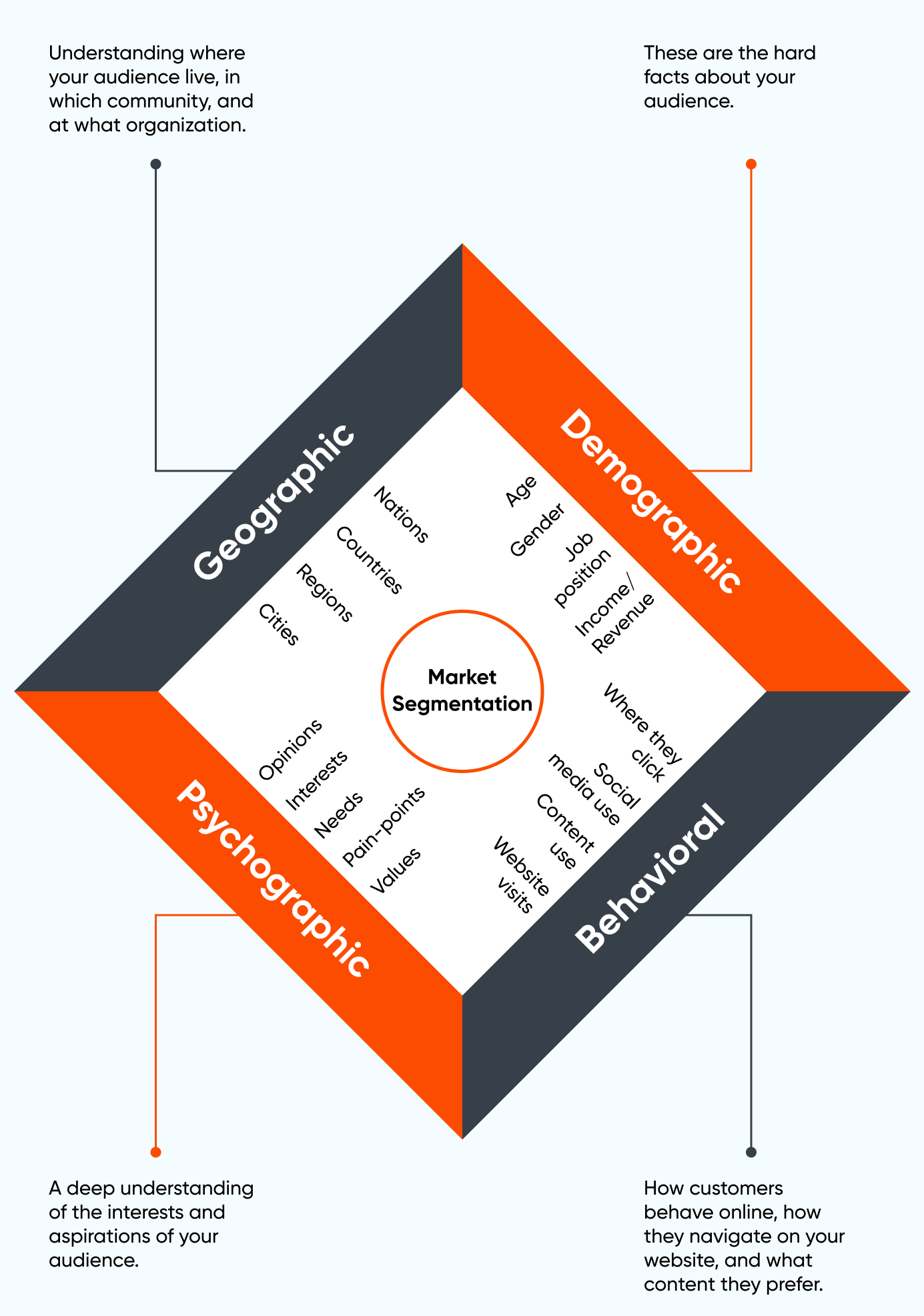
How To Segment Leads
The following steps can be followed to segment leads in a marketing automation platform.
Build Contacts
Most marketing automation platforms come with robust capabilities that help track all visits to a website. Every visitor is saved in the database. All contacts have multiple fields, including first name, last name, IP address, email, country, city, date last active, and preferred locale. Users can add additional fields like gender and behavioral patterns as well.
During the first visit, most of the contact fields are empty. Marketing automation platforms populate these fields based on user actions. The more data your marketing automation platform has, the better it can segment users into groups based on the defined criteria.
Segment By Location
Marketing automation platforms try to guess the contact's location based on the IP address. To create a segment based on location, simply use the segments section. Marketers can easily fill in the details with the segment name and alias.
Users can add a description or follow a naming convention to keep track of all segments. After that, save changes to apply the filter. Select the criteria a visitor has to meet to be assigned to a segment. For example, users can put 'Country equals to France' as a segment criterion.
Segment Based On Activity
Users can segment contacts based on their activity on the website, like page visits, forms filled, or emails read. For example, if a user wants to create a segment for leads interested in product X. A criteria for this could contact those who have visited the product page for X. The filtering criteria will be 'Visited URL contacts product X.'
Segment Based On Social Media
Users can target contacts based on data put across social media platforms. For example, contacts can be targeted based on their age on Facebook and Google ads. Marketing automation platforms can also use UTM (Urchin Tracking Module) tags to gather visitors from specific social media campaigns and include a logical filter to segment as the contacts are added to the system.
Create Detailed Segments
Marketers can also create specific or narrow segments using multiple filters chained with an 'And' condition within marketing automation platforms. It is also possible to create a small sub-segment by finding common elements from a few broader segments.
For example, users can create a sub-segment for people over 40 from France based on the above segment. With extensive segmentation capabilities, marketers can target particular user groups.
The Top Lead Segmentation Use Cases
There are a few popular lead segmentation use cases that can help increase the marketing ROI.
Lead Segmentation For Ecommerce Stores Based On Demographic
Several brands create separate marketing campaigns focusing on each gender. This approach allows organizations to tailor everything from images to the CTAs to align with the group's buying habits.
The clothing industry is the perfect example of gender segmentation. Brands that sell men's and women's clothing offer separate landing pages with models of the appropriate gender to catch the viewer's attention. This is a type of demographic segmentation.
Age is another type of demographic segmentation. Marketers combine these variables to reveal more insights and create specific campaigns like the ones done by the kids' toy industry.
Nurturing New Leads Based On Behavior
Segmenting new contacts, customers, or leads can help better target individuals in the early stages of their conversion journey. These segments require more nurturing than repeat customers already loyal to the brand.
For example, if an organization wants to create brand awareness, it needs more top-of-funnel content focusing on introducing the brand and its products. The organization can also highlight company values and why somebody should consider purchasing the product or service.
Let's assume this content is sent as a newsletter to the lead. The lead opens the email and resonates with the content. This provides the organization with the opportunity to follow up with mid-funnel content.
Using Lead Segmentation To Enhance Loyalty
Every organization needs loyal customers who regularly buy, visit the website, and browse offerings. These customers have a high lifetime value and should be nurtured.
The easiest way to do that is by giving them exclusive offers and discounts. Organizations can also run a reward points program to enable customers and lead to unlocking additional discounts by meeting certain purchase volume thresholds.
Another popular strategy is to segment customers and leads by their birthday. This helps build customer loyalty by sending a message on their birthdays and keeping the brand personally relevant.
Lifestyle Segmentation To Generate Interest In Products
Lifestyle segmentation refers to a combination of both demographic and behavioral models. This type of segmentation allows marketers to target leads highly interested in the offered products or services. It also helps avoid advertising to leads who have no interest, cannot access, or cannot afford the product or service.
For example, luxury car manufacturers use lifestyle segmentation to target top earners by analyzing factors like age, education level, occupation, and spending habits. These manufacturers can create ads that mirror individual interests and tastes.
Personalizing Cart Abandonment Campaigns To Enhance Sale
Tracking cart abandonment is a great first step for digital businesses. Organizations can utilize this data to retarget those individuals with abandoned carts. Cart abandonment can be classified as a separate segment, which can be incentivized to complete their purchasing using email-based advertising.
This tactic can help lower cart abandonment rates and increase total sales volume. Organizations can also offer a coupon or additional discount to improve the conversion rate.
Lead Segmentation Based On Values
Modern consumers are conscious of the values and beliefs of the brands with whom they do business. For example, there is an almost universal interest in sustainability. By segmenting leads passionate about conserving natural resources, organizations can appeal to the values of these leads using targeted ad campaigns.
Similarly, an environmentally conscious brand that has created a new line of products by recycling plastic can create targeted campaigns that showcase these facts. Ad campaigns can be created to show statistics on how much plastic waste the organization eliminates.
How Axelerant Helped Implement Marketing Automation Solutions
Before leveraging lead targeting and segmentation capabilities, finding the best marketing automation platform suited to your needs and successfully implementing it is important. The experts at Axelerant have done this for several clients over the years.
Enabling Marketing Automation With Campaign Factory For MDGs Clients
A high-stake client of mdg's had multiple marketing automation instances in Campaign Studio and Campaign Factory. The client needed consultative and implementation support with these instances and frontend implementation on HubSpot and WordPress.
The experts at Axelerant used their insight into Mautic, Campaign Factory, Campaign Studio, HubSpot, and WordPress to help the mdg team bridge the capability gaps. We helped streamline landing page creation, the addition of CTAs, and running marketing automation at large.
Scaling Email Marketing For An Ecommerce SaaS With Multi-Tenant Mautic
The customer wanted to provide end-users with a tailored email marketing tool that integrates with their custom ecommerce solution and its processes. Axelerant's experts began with an in-depth discovery spanning multiple sessions. Mautic emerged as the best solution among contenders such as ListMonk, SendPortal.io, Mailtrain, and Acquia Campaign Factory.
The experts divided implementation into two phases: Infrastructure setup and Customizing each instance to simplify usage. We built Mautic-based multi-tenant marketing automation. We also leveraged the Kubernetes platform for auto-scaling, Argo CI/CD tool, and Python API for onboarding customers to Mautic.
Utilizing Salesforce Marketing Cloud Engagement To Decrease Bounce Rate
Many organizations struggle with reducing the bounce rate on their website. To remedy this, organizations must present engaging and relevant content for visitors who land through paid, referral, or organic search.
Salesforce Marketing Cloud Engagement uses available data of the visitors, even if it's their first time on the website, to show relevant content that improves engagement. This also helps decrease the bounce rate.
Targeting And Segmenting Leads With HubSpot
HubSpot offers the ability to target and segment leads with static and active contact lists. Users can also set up contact scoring to use lists to segment customers. Marketers can also engage in event-based segmentation to directly target and locate customers in a specific area.
Schedule a call with the experts at Axelerant to learn more about how they can help implement the right marketing automation platform.

Prateek Jain, Director, Digital Experience Services
Offline, if he's not spending time with his daughter he's either on the field playing cricket or in a chair with a good book.

Simran Sethi, Senior Content Marketer
Simran is an avid reader. She is an active runner, who also likes to swim, dance, and sing. For her, the meaning of life lies in the little things. Kindness, passion, and compassion are her life’s essential values.
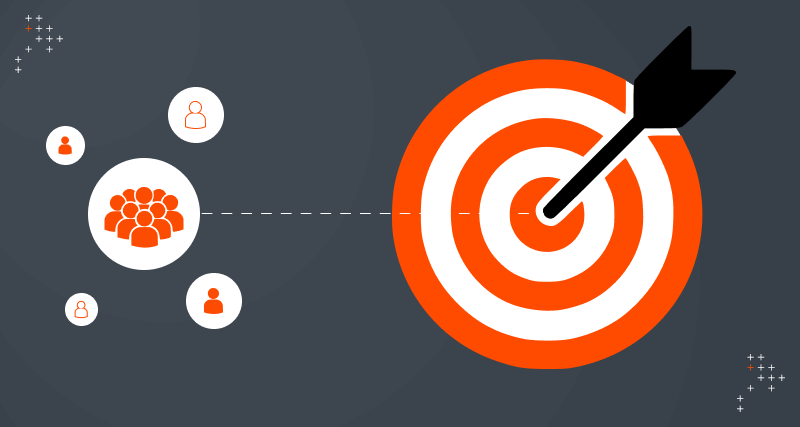
 We respect your privacy. Your information is safe.
We respect your privacy. Your information is safe.
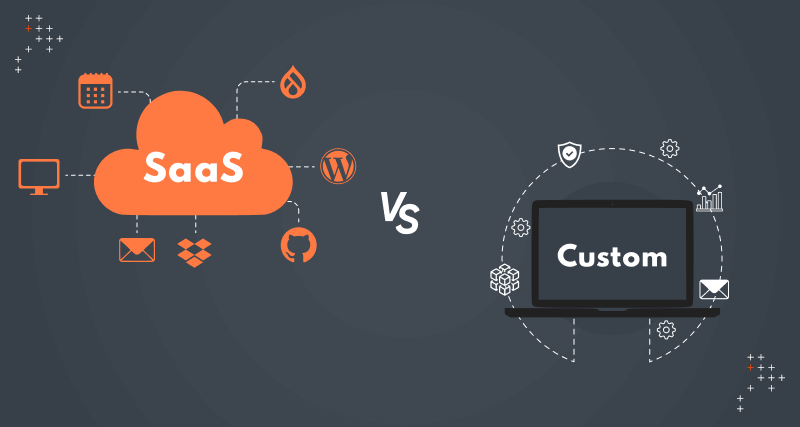
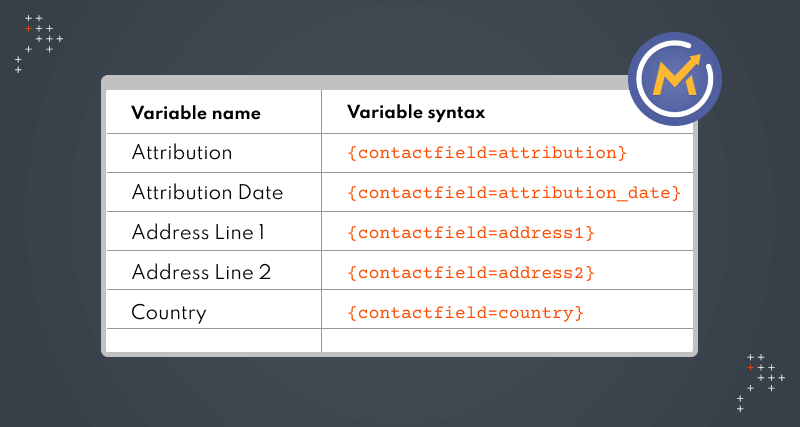
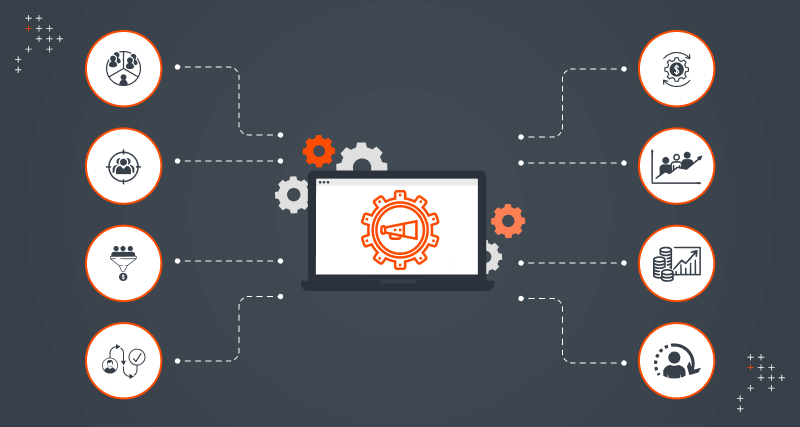

Leave us a comment